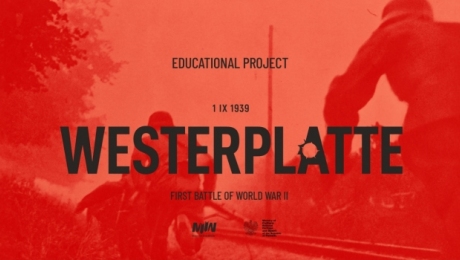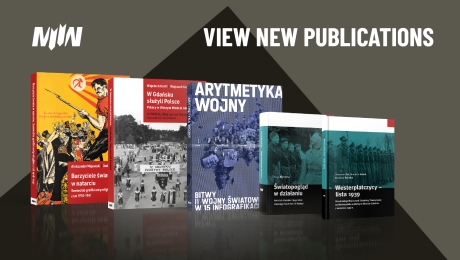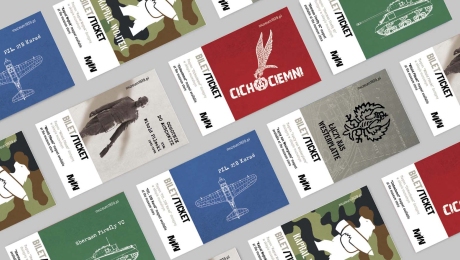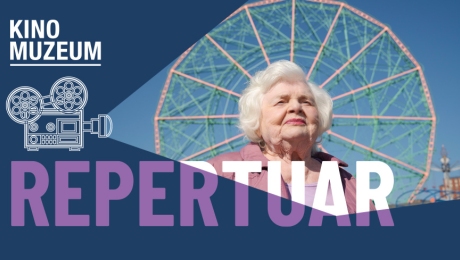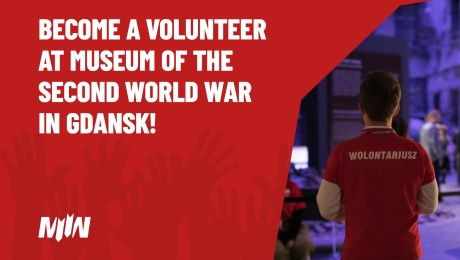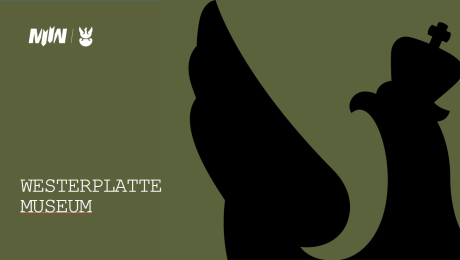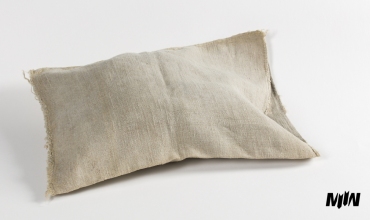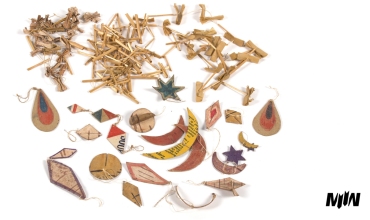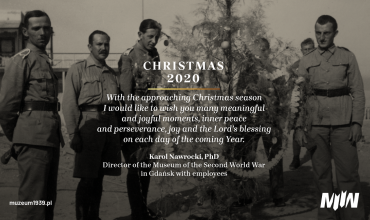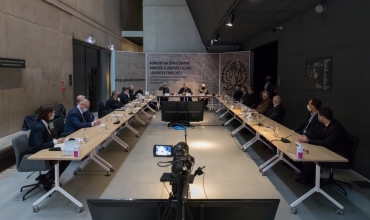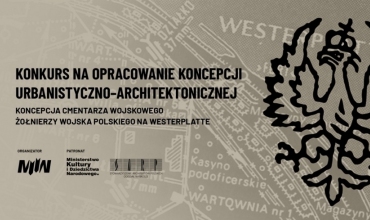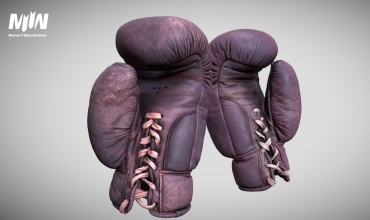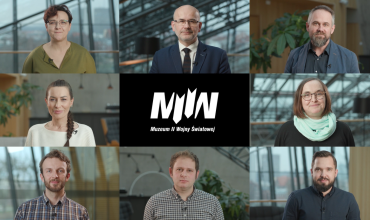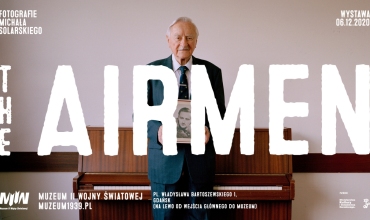News
A hand-made shopping bag used by Jadwiga Makarska’s mom to carry sugar and grocery from the store. Difficulties in obtaining many commodities were an everyday occurrence for the deportees, as she recalls in her memoirs.
Toys made by fourteen-year-old Stanisław Ścibor-Marchocki, from tree bark,
straw and cardboard
On 21 December this year, results of the competition for drawing up an urban and architectural concept of the Military Cemetery of the Polish Soldiers at Westerplatte were presented at the Museum of the Second World War in Gdańsk. A victorious work was made by NM architects Tomasz Marciniewicz, Zuzanna Szpocińska, Jerzy Grochulski (team of authors comprising: Tomasz Marciniewicz, Zuzanna Szpocińska, Jerzy Grochulski, Karolina Kayzer).
With the approaching Christmas season I would like to wish you many meaningful and joyful moments, inner peace and perseverance, joy and the Lord’s blessing on each day of the coming Year.
Karol Nawrocki, PhD
Director of the Museum of the Second World War in Gdańsk
On December 14th, 2020, the first gathering of the Competition Jury began to select the best urban-architectural concept for the Polish Army Cemetery at Westerplatte.This gathering is chaired by dr. hab. inż. arch. Boleslaw Stelmach Ph.
Order of Director of the Museum of the Second World War in Gdansk (Order 57/2020) of 9 December 2020
Order of Director of the Museum of the Second World War in Gdansk (Order 57/2020) of 9 December 2020 on appointing a Honorary Committee for holding a competition for preparing an urban and architectural concept of the Military Cementary of the Polish Army at Westerplatte.
Jan Bianga – an excellent sportsman, one of the best boxers in the history of the Gdańsk sport scene – is the protagonist of another edition of our campaign “Entering History”. This time we present boxing gloves that belonged to the boxer and boxing coach of the legendary club Gedania. Most significantly, the next “Rocky Boxing Night” gala will be named after Jan Bianga.
Today we celebrate the International Volunteer Day! We wish to thank all those who generously devote their free time to support us in carrying out museum tasks and projects. Your help is invaluable!
EXHIBITION „THE AIRMEN” FROM 6 DECEMBER IN THE SQUARE IN FRONT OF THE MUSEUM OF THE SECOND WORLD WAR
EXHIBITION „THE AIRMEN” FROM 6 DECEMBER IN THE SQUARE IN FRONT OF THE MUSEUM OF THE SECOND WORLD WAR The exhibition will showcase in an innovative and artistic manner the photography project "The Airmen" by the photographer Michał Solarski.






